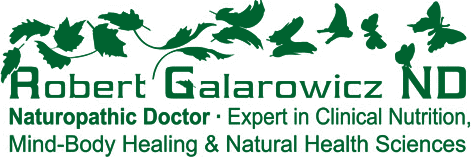Did you know that right this second, the microorganisms in your gut number in the trillions and they all have significant roles in aiding digestion but also in helping people with prevention of chronic illnesses like IBD and even Alzheimer’s. These microorganisms are fueled by the things we put into our bodies. So the old adage, “You are what you eat,” is fundamentally true. What you eat determines the balance of good bacteria, protozoa, viruses and fungi in your gut, and tending to this garden of flora can help you harvest years of good health.

Cultivating a garden of good digestive bacteria is vital to continued good health.
Unfortunately, maintaining the right, optimal balance of good gut flora is a balancing act that isn’t equally easy to achieve for everyone. This could be due to a variety of reasons. It could be your genetics or some health condition that overtaxes your gut’s resources, but in any case there are safe interventions for bolstering the gut’s natural defenses.
One of these approaches, and perhaps the most effective next to supplementation with probiotics is diet. There are foods which will actively encourage the gut to have bacterial diversity, which means there are multiple varieties that can attend to all the various tasks charged with the digestive system and protect against multiple illnesses.
Here are some of the best bacterial diversity-boosting kinds of foods to eat:
- Yogurt, Tempeh, Sauerkraut And Other Fermented Foods
The fermenting process produces lactic acid and can also help increase the presence of two specific key digestive bacteria, lactobacilli and bifidobacteria.
- High Fiber Grains and Other Carbs
Although carb-avoidance has been in fashion for many dieters and others seeking quick weight loss, carbs can be very beneficial as a pre-biotic which stimulates the development of probiotics. High fiber grains like oats and barley and even more readily digestible carbs like sugars and starches can positively impact the amount of good bacteria in the gut.
- Supplemental Proteins Like Whey and Pea Protein
Whey and pea protein can decrease bad pathogenic bacteria and increase good bacteria, but moderation is key as several studies cited a reduced rate of good bacteria in those who followed an exclusively high protein diet.
- Good Fats (Yes, They Exist!)
Not all fats are bad! In our fat-phobic society, we’ve been conditioned to avoid fat but the reality is that your body needs fat to survive and good fats in order for your gut bacteria to thrive. Good fats like those found in avocados and nuts, along with fatty acids like fish oils and several varieties of fish themselves can contribute to a much healthier gut replete with a plethora of good bacteria.
- Fruits & Veggies (And Derivatives Thereof) Rich In Polyphenols
Polyphenols are compounds that can be found in a variety of fruits, vegetables, chocolate, teas, seeds and wine. They can increase positive bacteria and decrease the pathogenic, bad kind.
One of the best diets to adopt for continued digestive health and plenty of good bacteria in the gut is the Mediterranean Diet which favors lots of fresh fruit, vegetables, seafood and olive oil.
Also, the importance of supplementation cannot be underestimated, as a high-quality and potent probiotic/prebiotic blend is essential to attaining and maintaining the good bacteria that can protect you against several diseases, facilitate good digestion and keep you and your gut thriving


